My shopping cart
Your cart is currently empty.
Continue ShoppingStruggling with doors that won’t stay put, especially when a door won't stay open or is swinging open unexpectedly ? Learn how to fix the door that won’t stay open or closed with our guide. We’ll cover quick fixes like door stoppers and temporary latches, and walk you through longer-term solutions such as hinge adjustments and structural repairs.
Dealing with a door that won’t stay open or closed can be more than just a minor annoyance—it can disrupt your daily routine and compromise your home’s security. Common door problems, such as loose hinges, a door that doesn’t close properly, or issues caused by improper installation, including failures in the lock mechanism often stem from the door frame or the way the hinges are attached. Sometimes, the root cause is as simple as a loose screw, while other times it’s a misaligned frame that needs attention. Understanding these common door problems is the first step to finding the right fix. In this guide, we’ll help you identify the source of your door troubles and walk you through practical solutions to restore your door’s functionality and ensure it stays open or closed as needed.
Before you can fix a door that won’t stay open or closed, it’s helpful to understand how the main components work together. The door frame acts as the foundation, supporting the door and ensuring it swings smoothly. Hinges connect the door to the frame, allowing it to move, while the strike plate—a metal plate attached to the door frame—receives the latch when the door is closed. The latch itself extends from the door and fits into the strike plate hole, keeping the door securely shut. If any of these parts are out of proper alignment, the door may not function as intended. Knowing how the frame, hinges, strike plate, and latch interact will help you pinpoint the issue and apply the right fix for common door problems.
Dealing with a door that won’t stay open or closed can be more than just a minor annoyance—it can disrupt your daily routine and compromise your home’s security. Common door problems, such as loose hinges, a door that doesn’t close properly, or issues caused by improper installation, often stem from the door frame or the way the hinges are attached. Sometimes, the root cause is as simple as a loose screw, while other times it’s a misaligned frame that needs attention. Understanding these common door problems is the first step to finding the right fix. In this guide, we’ll help you identify the source of your door troubles and walk you through practical solutions to restore your door’s functionality and ensure it stays open or closed as needed.
Before you can fix a door that won’t stay open or closed, it’s helpful to understand how the main components work together. The door frame acts as the foundation, supporting the door and ensuring it swings smoothly. Hinges connect the door to the frame, allowing it to move, while the strike plate—a metal plate attached to the door frame—receives the latch when the door is closed. The latch itself extends from the door and fits into the strike plate hole, keeping the door securely shut. If any of these parts are out of proper alignment, the door may not function as intended. Knowing how the frame, hinges, strike plate, and latch interact will help you pinpoint the issue and apply the right fix for common door problems.
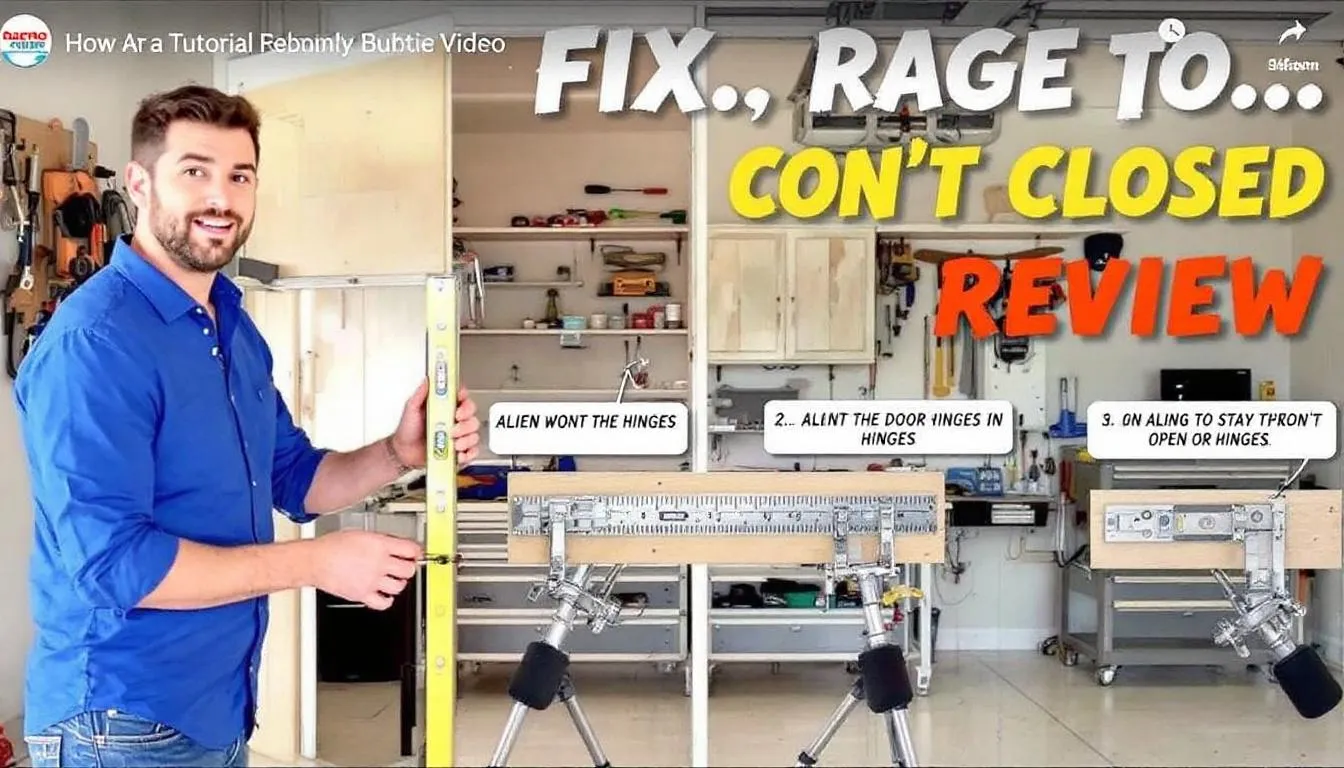
When faced with a door that won’t stay open or closed, immediate solutions can provide much-needed relief. These quick fixes are designed to stabilize the door temporarily, including checking the screws holding the hinges in place . Adjusting the door's position within the frame, such as correcting hinge alignment or using shims, can also help address the issue, ensuring the door functions properly without closing or opening unexpectedly.
We’ll cover three effective methods: using a door stopper, installing a temporary latch, and adjusting the hinge pin. These solutions offer a swift resolution to keep your door in place until you can implement more permanent fixes. Additionally, installing a door closer can help control the speed and tension at which the door closes, preventing it from shutting unexpectedly and helping manage how the door latch stays open or closed.
A door stopper is a practical tool to keep your door open temporarily. Whether it’s a wedge, a traditional door stop, or even a stack of magazines, these items can support your door effectively. Simply place the stopper against the door to hold it in the desired position, ensuring it doesn’t interfere with old screw holes .
This solution is especially useful for interior doors and can quickly address common door problems while you consider a more permanent fix with wood filler.
A temporary latch, such as a hook-and-eye latch, can be an excellent solution to keep your door closed securely fastened. This method is particularly beneficial when dealing with doors that refuse to stay shut due to hinge alignment issues or a malfunctioning lock mechanism.
Installing a temporary latch ensures the door remains in place until you can address the underlying problem related to screw holes , making it a quick and effective way to fix a door that won’t stay closed.
Adjusting the hinge position or hinge pin is another simple yet effective way to stabilize your door. Here’s how to do it:
This quick adjustment can significantly improve the door’s functionality without requiring major repairs, especially if using longer screws .
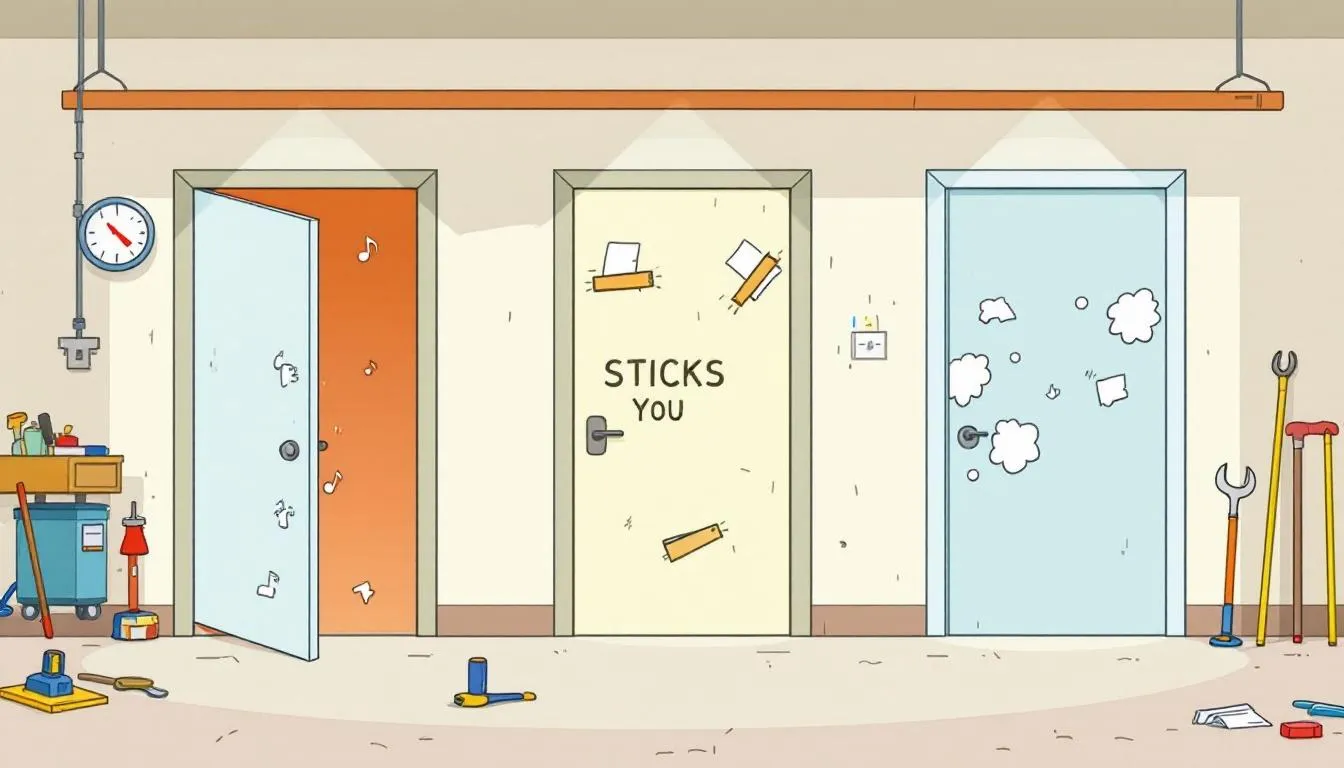
Diagnosing the root cause of your door issues is crucial before implementing permanent fixes. The most common reasons for doors not staying open or closed include:
Issues with the door's alignment can also prevent the door from staying open or closed. A thorough inspection of the door frame, hinges, and other components will help identify the underlying issues, ensuring everything is aligned properly .
Inspecting door hinges, checking strike plate alignment, and looking for structural issues will help you address the hammer problem effectively. Make sure the strike plate is aligned correctly so the latch meets the plate properly. If the latch fits poorly into the strike plate, it may indicate a misalignment.
Uneven flooring can also impact the door's ability to close properly, so be sure to check for issues with the bottom hinge as part of your inspection.
Examining the door hinges is the first step in diagnosing door issues. Look for misaligned or loose hinges, as these are common reasons a door won’t stay in place. Inspect the hinges thoroughly for signs of wear or damage and ensure there is no excess grease that could impede movement; if necessary, adjust the hinge slightly . Check both the top hinge and bottom hinge for looseness or misalignment, as issues with either can affect how the door stays open or closed.
If tightening hinge screws doesn’t resolve the issue, you may need to tighten hinges and reposition the hinge slightly to improve alignment.
The strike plate, a metal plate on the door frame that receives the door latch, plays a critical role in ensuring the door closes properly. Inspect the strike plate to see if it is misaligned or damaged, which could prevent the door from staying closed.
Adjusting the strike plate can often resolve issues with doors that won’t latch correctly. If necessary, use a metal file to enlarge or smooth the strike plate hole for better latch alignment. If the strike plate screws are loose or the screw holes are stripped, repair the holes or use larger screws to ensure the hardware remains secure.
Structural issues, such as changes in humidity causing wood frames to swell, can significantly impact door functionality. If the door frame is misaligned or there are gaps between the door and frame, it may be necessary to frame correctly and seek professional help to fix these issues. In some cases, it may also be necessary to re hang the door to restore proper alignment and ensure smooth operation.
Addressing structural problems ensures a long-lasting solution to your door woes. However, if the problem persists, further evaluation may be necessary.
Interior doors face their own set of challenges, from daily wear and tear to changes in humidity and the natural settling of your home. These factors can cause the door frame to shift or the hinges to become loose, making it difficult for the door to stay open or closed. If you notice your interior doors aren’t operating smoothly, start by checking for loose hinges and tightening them as needed. If the problem continues, you may need to adjust the strike plate or even use coarse sandpaper on the door frame to reposition it for a secure fit. Regular maintenance, such as lubricating the hinges and latch, can also help your interior doors function properly and prevent future issues.
Interior doors face their own set of challenges, from daily wear and tear to changes in humidity and the natural settling of your home. These factors can cause the door frame to shift or the hinges to become loose, making it difficult for the door to stay open or closed. If you notice your interior doors aren’t operating smoothly, start by checking for loose hinges and tightening them as needed. If the problem continues, you may need to adjust the strike plate or even reposition the door frame to ensure a secure fit. Regular maintenance, such as lubricating the hinges and latch, can also help your interior doors function properly and prevent future issues.
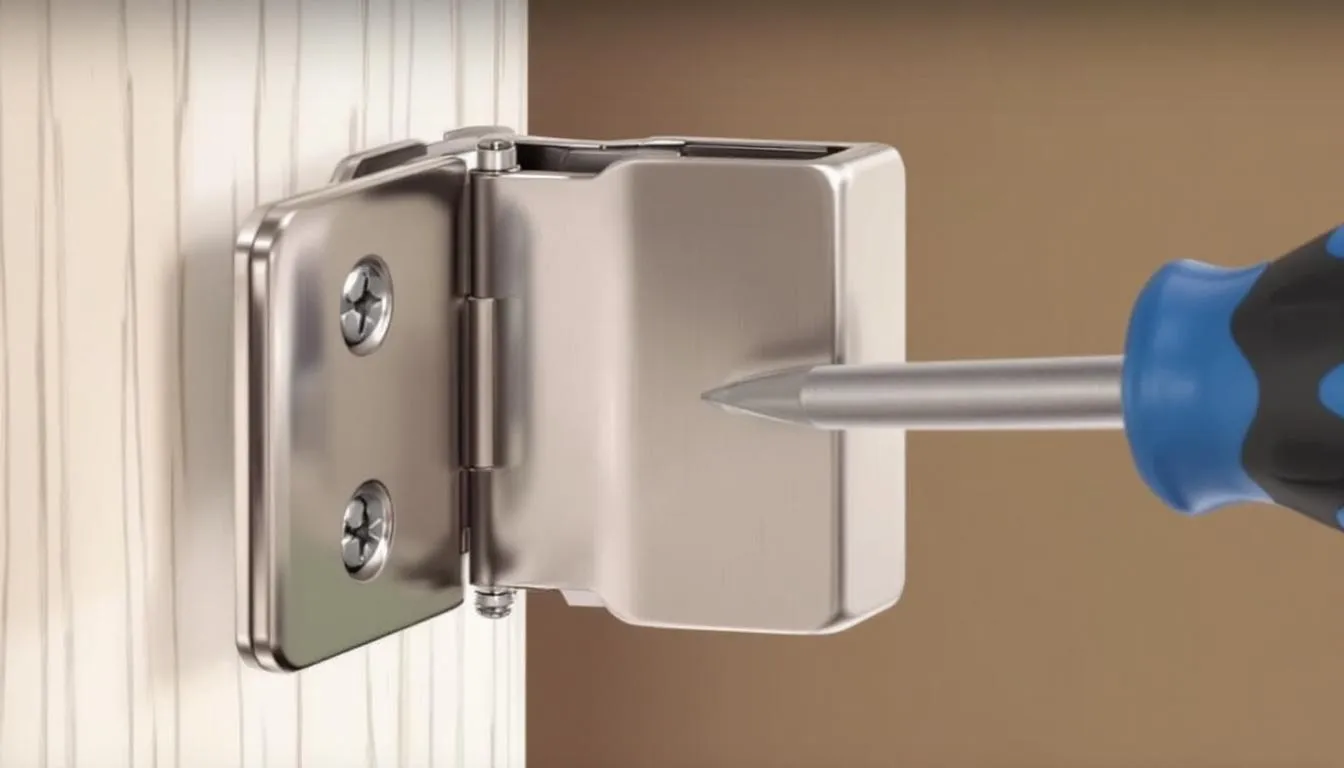
If your door won’t stay open, it may be due to improper balance or mechanical issues. Loose hinges or problems with the door jamb can also cause this issue.
This section will cover three effective methods: bending the hinge pin, installing a magnetic door stop by mounting it securely to the wall for stability, and adding a door spring opener. These solutions offer practical ways to fix a door that won’t stay open and ensure it remains in the desired position.
Bending the hinge pin can adjust the tension, allowing for better control of door movement. Start by carefully removing the hinge pin from the door hinge. Using pliers, gently bend the hinge pin slightly to create resistance against unwanted swinging.
Reinsert the hinge pin and test the door movement to ensure it stays open or closed as desired.
Magnetic door stops are an excellent solution for keeping a door open securely. These stops can be easily installed with minimal tools and provide stability by preventing the door from swinging shut unexpectedly.
Once installed, a magnetic door stop ensures the door remains in the open position when needed, enhancing the door’s functionality.
Adding a door spring opener, such as a butterfly spring, provides several benefits:
Adding a door spring opener ensures your door stays open when needed, enhancing usability and convenience.
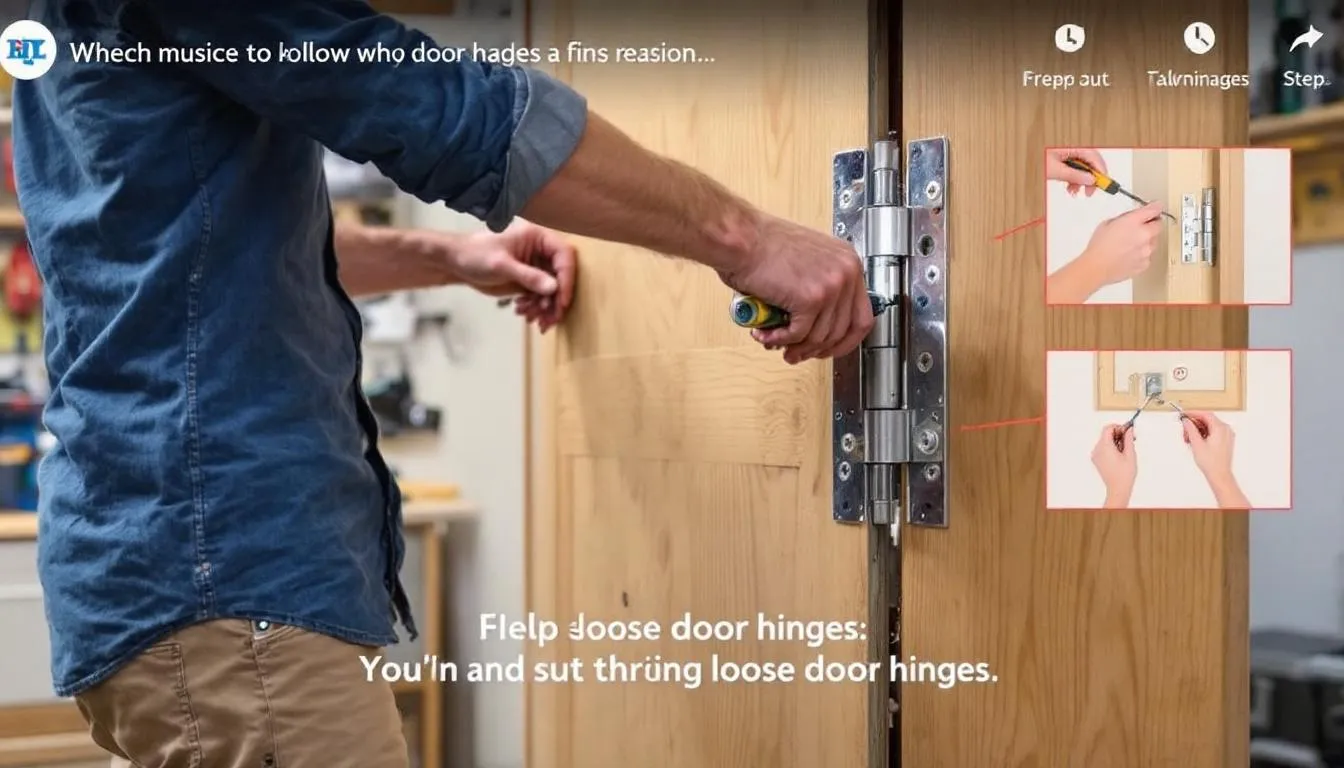
When dealing with a door that won’t stay closed, securing the door’s alignment and ensuring proper engagement with the strike plate is essential. This section will cover tightening loose hinges, adjusting the strike plate, and shimming the hinges to ensure your door closes properly.
These methods provide effective solutions to fix a door that won’t stay closed and ensure it remains staying shut securely. By following these steps, you can achieve a more secure fit for your door, improving the stability and security of its hardware.
Loose screws on door hinges are a common reason for a door not closing properly. Regularly checking and securing hinge screws can ensure proper door alignment and functionality. If hinge screws are stripped, replace them with longer screws to improve durability and ensure the door stays in place.
Adjusting the strike plate can resolve issues with doors that won’t latch correctly. If the strike plate is misaligned, reposition it to ensure proper engagement with the door latch.
In cases where the latch doesn’t engage properly, enlarging the strike plate hole can provide a better fit.
Shimming the hinges can help correct alignment issues and ensure the door closes properly. Inserting shims behind the hinges adjusts the door’s position to bring the latch closer to the strike plate.
After inserting shims, tighten the screws on the hinges to secure the door in the new position.
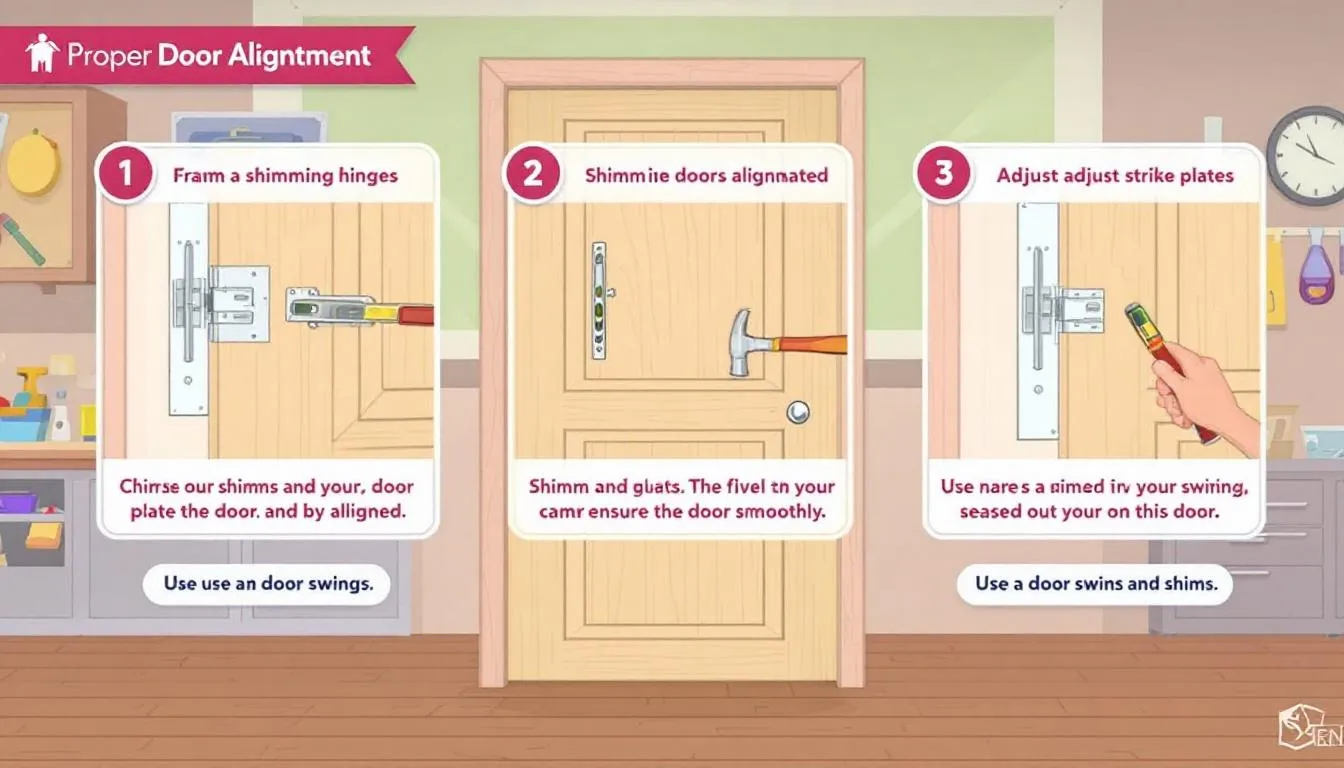
Proper door alignment is crucial for the door’s functionality and longevity. Misaligned hinges or frames can cause the door’s alignment to sag or not stay in place, which may result in a door that is significantly misaligned and does not fit properly when not aligned properly due to improper installation.
This section will cover leveling the hinges, readjusting the door frame, and testing and fine-tuning to ensure your door is properly aligned. These steps will help you achieve a secure fit and smooth operation.
Leveling the hinges involves the following steps:
Regular adjustments can rectify alignment issues without extensive repairs.
Modifying the door frame can significantly enhance the door’s closure and alignment. Adjustments may include adding or removing material to achieve the desired alignment. Using a spirit level can help assess whether the door frame is properly aligned.
A well-aligned door frame is crucial for both aesthetic and functional purposes. It is important to frame correctly to ensure the door’s functionality operates smoothly. Additionally, proper alignment of door frames enhances the overall appearance.
After making adjustments, it’s crucial to test the door to ensure it opens and closes without obstruction. Regular testing helps identify any remaining issues and allows for necessary fine-tuning.
Continuously checking the door after modifications ensures smooth operation and allows you to address any minor issues promptly.
Preventing future door problems involves regular maintenance and using quality hardware. Addressing environmental factors such as humidity and temperature changes can also help prevent issues. Additionally, applying silicone spray can enhance protection against these elements.
This section will cover regular maintenance routines, the importance of using quality hardware, and how to mitigate environmental factors to keep your doors in optimal condition.
Regular maintenance of door hardware is essential to ensure all components remain secure and function smoothly. Regularly tightening screws on door hinges enhances alignment and functionality. Including regular inspections and maintenance checks will keep your door functioning optimally.
Investing in high-quality door hinges and screws reduces maintenance frequency and ensures long-term reliability.
Selecting high-quality hinges and locks can significantly enhance a door’s ability to stay in place, minimizing issues with misalignment. Investing in durable door hardware can prevent frequent replacements and maintain the door’s functionality longer.
Quality door handles ensure smooth operation and reduce wear on the door mechanism, contributing to overall stability. Properly installed quality strike plates can improve the door’s latch engagement, preventing it from unintentionally swinging open or shut.
Humidity and temperature changes can cause a door to swell or warp, affecting its fit within the frame. Moisture, temperature fluctuations, and age can lead to warping.
Controlling indoor humidity levels and ensuring proper ventilation can help prevent door swelling and misalignment.
Fixing a door that won’t stay open or closed involves both immediate solutions and long-term fixes. We’ve covered various methods from using door stoppers and temporary latches for quick relief, to diagnosing root causes such as loose hinges and misaligned strike plates. By addressing these issues, you can enhance your door’s functionality and ensure it stays in place.
Regular maintenance, using quality hardware, and addressing environmental factors can prevent future door problems. By implementing these preventive measures, you’ll save time and effort in the long run, keeping your doors operating smoothly. Remember, a well-maintained door not only enhances the aesthetic appeal of your home but also ensures safety and convenience. Take the time to care for your doors, and they will serve you well for years to come.
If you encounter a door problem that seems too complex to handle on your own, don’t hesitate to seek professional help. A skilled handyman or carpenter can quickly diagnose and fix common door problems, ensuring your doors are safe and functional. For those who prefer a DIY approach, there are plenty of online resources available, including home improvement websites, YouTube tutorials, and manufacturer instructions tailored to specific door models. By understanding the basics of door mechanics and knowing when to seek professional assistance, you can confidently fix your doors and keep them working smoothly for years to come.
If you encounter a door problem that seems too complex to handle on your own, don’t hesitate to seek professional help. A skilled handyman or carpenter can quickly diagnose and fix common door problems, ensuring your doors are safe and functional. For those who prefer a DIY approach, there are plenty of online resources available, including home improvement websites, YouTube tutorials, and manufacturer instructions tailored to specific door models. By understanding the basics of door mechanics and knowing when to seek professional assistance, you can confidently fix your doors and keep them working smoothly for years to come.
The quickest way to fix a door that won't stay open is to use a door stopper; just position it against the door to keep it in place temporarily. This simple solution allows you to hold the door open without making permanent changes.
To adjust a misaligned strike plate, reposition it for proper engagement with the door latch and, if needed, enlarge the hole in the plate to ensure a better fit. This will help your door close securely.
To address loose door hinges, tighten the screws or replace any stripped screws with longer ones. Regular maintenance will keep your door functioning properly.
To effectively prevent your door from swelling due to humidity, manage indoor humidity levels with dehumidifiers and improve ventilation. Additionally, ensure regular maintenance and use quality hardware for better durability.
You should seek professional help for door issues when there are significant structural problems, such as extensive warping or misalignment that can't be easily fixed. A professional can assess the situation and provide effective solutions.